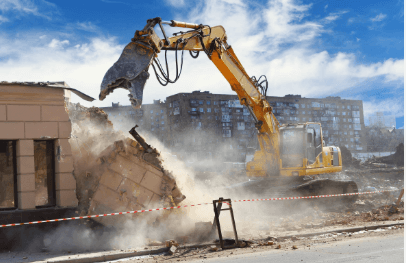Safe and Efficient Demolition Services for Building Removal

The process of building removal demands a meticulous approach, where safety and efficiency are paramount. Engaging professional demolition services not only ensures compliance with regulatory standards but also mitigates risks associated with structural dismantlement. Through strategic planning and the implementation of key safety measures, these services can significantly reduce hazards to both workers and the surrounding community. Furthermore, the integration of environmentally responsible practices raises critical questions about sustainability in demolition efforts. What strategies are being employed to balance these concerns, and how can they shape the future of urban development?
Importance of Professional Demolition
The importance of professional demolition cannot be overstated, as it ensures the safe and efficient removal of structures while adhering to regulatory standards.
Effective project planning is crucial in navigating demolition regulations, minimizing risks, and promoting environmental safety.
Skilled professionals assess site conditions, manage hazardous materials, and implement best practices, guaranteeing that each demolition project aligns with legal requirements and industry standards for safety and efficiency.
See also: Reliable General Contracting Services for Any Project
Key Safety Measures in Demolition
In demolition projects, adherence to key safety measures is essential to protect workers, the public, and surrounding properties.
Effective hazard identification is crucial, ensuring potential risks are recognized and mitigated before work begins.
Additionally, equipment safety protocols must be strictly followed to prevent accidents.
Environmental Considerations
How can demolition services effectively minimize their environmental impact while ensuring project success?
By implementing sustainable practices, such as selective dismantling and recycling materials, companies can significantly reduce waste.
Effective waste management strategies ensure that hazardous materials are properly disposed of, while reusable resources are maximized.
This approach not only protects the environment but also aligns with the growing demand for responsible demolition solutions.
Steps in the Demolition Process
Effective environmental practices set the stage for a systematic approach to building demolition.
Initially, securing demolition permits ensures regulatory compliance.
Next, thorough site preparation involves assessing structural integrity, utility disconnections, and hazardous material identification.
Implementing safety protocols is paramount during this phase.
Conclusion
In conclusion, safe and efficient demolition services are paramount in the systematic removal of structures, safeguarding both personnel and the surrounding community. The implementation of rigorous safety measures and sustainable practices not only mitigates environmental impact but also fosters responsible resource management. Notably, approximately 90% of demolition materials can be recycled or reused, highlighting the potential for significant waste reduction and promoting a circular economy within the construction industry. Prioritizing safety and sustainability remains essential in modern demolition practices.





